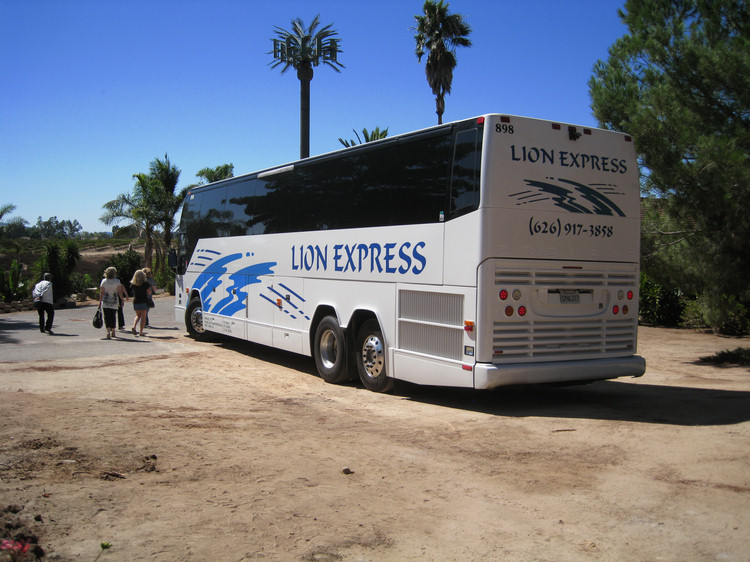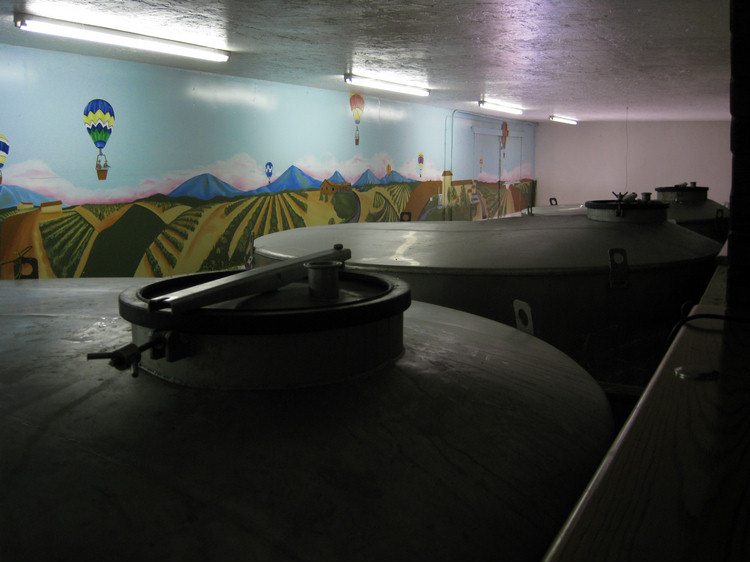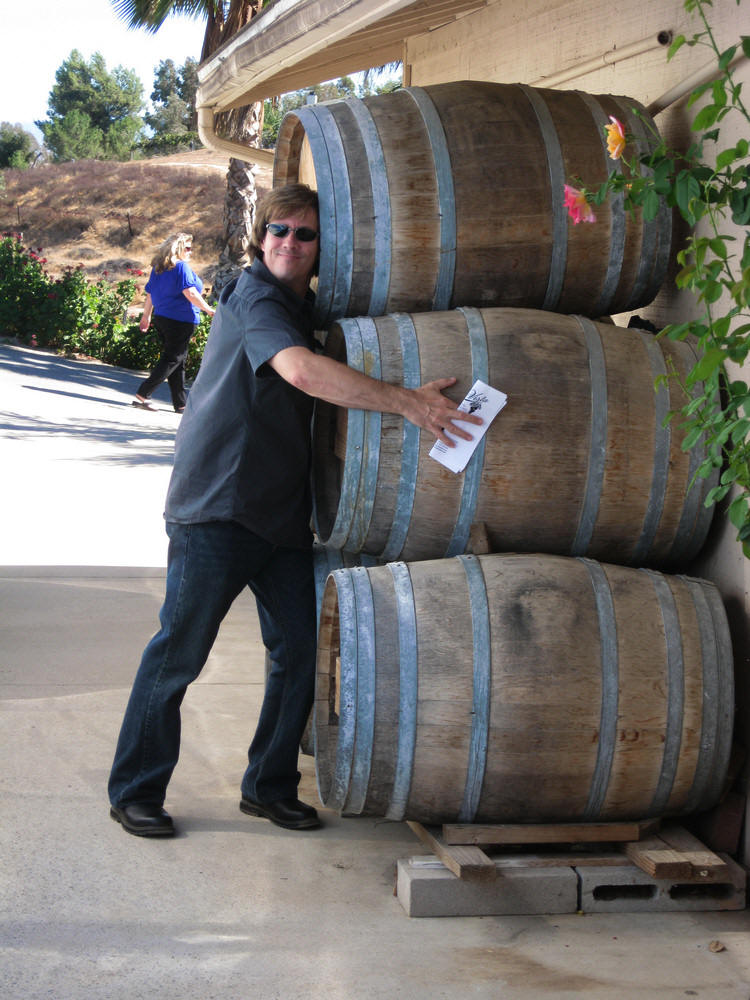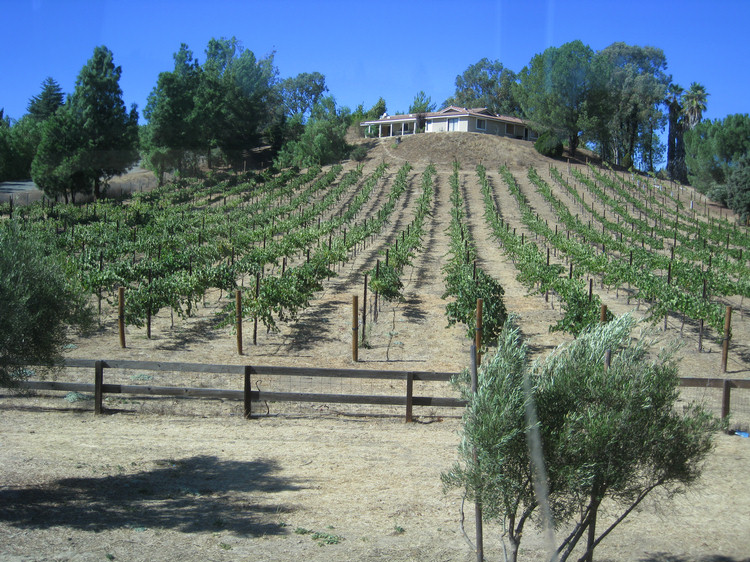More Tasting And Lunch At Maurice Carrie
Page 1 - Temecula Wine Tour - Page 2 - Wine Tasting & Lunch - Page 3 - Pechanga And Going Home
Wine Tasting #2 - Maurice Carrie


Did you know? - The Maurice Car’rie Vineyard & Winery is nestled amidst the rolling hills of beautiful Temecula Valley. The winery was founded in 1986, and designed after a Victorian-style farmhouse. The 46 acres of vineyards were the first vineyards established in the region in 1968. Owners, Buddy and Cheri Linn, and winemaker, Gus Vizgirda, are focused on wines that are ready to drink at a fairly early age. They handcraft 14 varietals that have received hundreds of awards and accolades in a long list of competitions.

Great grounds on which to enjoy a picnic
Did you know? - Picnic? The first usage of the word is traced to the 1692 edition of Origines de la Langue Française de Ménage—which mentions 'pique-nique' as being of recent origin; it marks the first appearance of the word in print. The term was used to describe a group of people dining in a restaurant who brought their own wine. For long a picnic retained the connotation of a meal to which everyone contributed something. Whether picnic is actually based on the verb piquer which means 'pick' or 'peck' with the rhyming nique meaning "thing of little importance" is doubted; the Oxford English Dictionary says it is of unknown provenance. The word does not come from any racist origin, as a false rumor spread mostly via the internet suggests.
After the French Revolution in 1789, royal parks became open to the public for the first time. Picnicking in the parks became a popular activity amongst the newly enfranchised citizens.
Early in the 19th century, a fashionable group of Londoners formed the 'Picnic Society'. Members met in the Pantheon on Oxford Street. Each member was expected to provide a share of the entertainment and of the refreshments with no one particular host.

No wind up top!
Did you know? - In the United States, the development of the water-pumping windmill was the major factor in allowing the farming and ranching of vast areas of North America, which were otherwise devoid of readily accessible water. They contributed to the expansion of rail transport systems throughout the world, by pumping water from wells to supply the needs of the steam locomotives of those early times. Two prominent brands were the Eclipse Windmill developed in 1867 (which was later bought by Fairbanks-Morse) and the Aermotor, which first appeared in 1888 and is still in production. The effectiveness of the Aermotor's automatic governor, which prevents it from flying apart in a windstorm, led to its popularity over other models. Currently, the Aermotor windmill company is the only remaining water windmill manufacturer in the United States. They continue to be used in areas of the world where a connection to electric power lines is not a realistic option.

"NO! I do NOT need a stool!!!:

"OK... Show me the wine and there will be no trouble!"

It was a wild group!

Donna says "I'll take one of each!"

She is doing some serious study!

"Hey guys... This is pretty good!"

Six glasses later!

Bob has an interesting subject

One or two brie's with sourdough?
Did you know? - Brie is a soft cows' cheese named after Brie, the French province in which it originated (roughly corresponding to the modern département of Seine-et-Marne). It is pale in colour with a slight grayish tinge under crusty white mould; very soft and savory with a hint of ammonia. The white mouldy rind is edible, and is not intended to be separated from the cheese before consumption.


The wrap around porch was perfect for lunch!

And we could go browsing afterwards!
 A
Windmill is a mill powered by the wind. It reduces a solid or coarse substance into pulp or minute grains by crushing, grinding, or pressing. The term windmill is also sometimes used to refer to Wind energy conversion systems as
wind pumps and wind turbines.
A
Windmill is a mill powered by the wind. It reduces a solid or coarse substance into pulp or minute grains by crushing, grinding, or pressing. The term windmill is also sometimes used to refer to Wind energy conversion systems as
wind pumps and wind turbines.

The bus was always close by

Over The Teeth And Through The Gums, Look Out Tonsils Here It Comes! Lunch

"Gourmet" lunch from Bristol Farms
Did you know? - Gourmet is a cultural ideal associated with the culinary arts of fine food and drink, or haute cuisine, which is characterized by elaborate preparations and presentations of large meals of small, often quite rich courses. The term and its associated practices are usually used positively to describe people of refined taste and passion. For some, it holds a negative connotation of elitism or snobbery.
The word gourmet is from the French term for a wine broker or taste-vin employed by a wine dealer. Friand was the reputable name for a connoisseur of delicious things that were not eaten primarily for nourishment: "A good gourmet", wrote the conservative eighteenth-century Dictionnaire de Trévoux, employing this original sense, "must have le goût friand", or a refined palate. In the eighteenth century, gourmet and gourmand carried disreputable connotations of gluttony, which only gourmand has retained. Gourmet was rendered respectable by Monsieur Grimod de la Reynière, whose Almanach des Gourmands, essentially the first restaurant guide, appeared in Paris from 1803 to 1812.

Those are gourmet Fritos??
Did you know? - Fritos is the name of a brand of corn chips made by Frito-Lay. Originally called Fritatas, Elmer Doolin was so taken with the bag of corn chips served with his lunch in San Antonio, Texas that he paid $100 for the recipe. In 1932, he started the Frito Corporation. Original Fritos ingredients are limited to whole corn, corn oil, and salt. Fritos (original and barbecue flavor) are a vegan snack.
From 1952 until 1967, the Frito Kid was the company's official mascot. The Frito Bandito was its mascot from 1967 until about 1971, and was discontinued due to complaints about the Bandito image.

Donna and Bob joined us for lunch!

One happy group!

Temecula has grown up
Wine Tasting #3 At Bella Vista

Did you know? - The Temecula wine region began developing in the mid-1960’s when The Kaiser Land Development Company purchased what was known as Vail Ranch in 1964 and began investing in and marketing the Temecula Valley. Horticulturalists were brought in to evaluate the area to learn what type of agricultural products could be grown. Along with avocados, the experts determined that wine vineyards were well suited for the valley. The cool moist air from the coast would settle in the Temecula Appellation in the evening and would burn off the following morning, perfect for grape growing. Vines were planted on our Calle Contento property in 1968 by the first owner. Five acres of the original acres are still producing adjacent to the winery, which was built in 1978.
Two years ago Imre and Gizella Cziraki purchased the former Cilurzo Winery, the location of Temecula’s first commercial vineyard. The Cziraki’s have been updating and modernizing the winery facility and grounds since the purchase.
Bella Vista’s owner Imre Cziraki began making wine at age 7 with his grandfather in Hungary. He purchased his first vineyard in La Cresta in 1982 which was followed by the purchase of his Bella Vista Vineyard in 1998 and the winery property in 2004.

The bus dropped us off at the top of the hill!

The wineries in the picture are where we just were!

The Duda's and Liles'

No Donna, you cannot fly!

Very picturesque area

"Stop stop... The bus is leaving without us!"

The ducks has spotted the "Duck Lady"

Moving the bus closer to us

Quick walk down the hill to the tasting

Vineyards everywhere

Hop, skip, and a jump!


Antenna trees


We made it


We are ready... Start the pouring

Donna and Bob are ready to fly!

Dang! She is at it again!

For an extra $5, you can jump inside!

Very homey atmosphere!

Bob in the white hat (He is a good guy)


Sarge says....

Watch out crash!

He's back!!

"I don't want to leave my woobie!"

Huh??? We have twenty minutes?? Champagne time!
One Bottle Of Champagne, Four Glasses And We Are Off!

No... You have to share!

Donna decided to watch the professional drinkers

Bob popped the cork about 100 feet over the edge of the cliff!

1915 English magazine illustration
of a lady riding a Champagne cork
Did you know? - Champagne corks are built from several sections and are referred to as aglomerated corks. The mushroom shape that occurs in the transition is a result of the bottom section, which is in contact with the wine, being composed of two stacked discs of pristine cork, cemented to the upper portion which is a conglomerate of ground cork and glue.
Prior to insertion, a sparkling wine cork is almost 50% larger than the opening of the bottle. Originally they start as a cylinder and are compressed prior to insertion into the bottle.
Over time their compressed shape becomes more permanent and the distinctive "mushroom" shape becomes more apparent. The aging of the Champagne post disgorgement can to some degree be told by the cork, as the longer it has been in the bottle the less it returns to its original cylinder shape

Do you see the cork anyplace???
Absolutely gorgeous day!

The previous winery

We are off to Pechanga